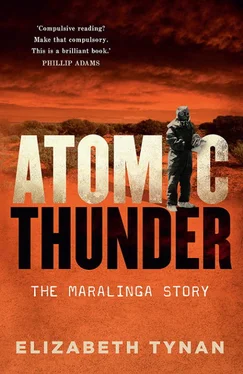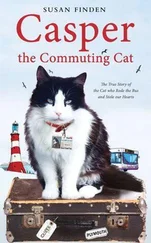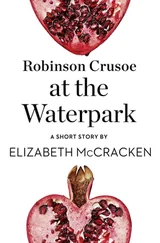In calm language, the scientists were explaining a bomb never before seen. This nightmarish weapon would not just have a huge explosive impact but would go on harming people long after its detonation, and well beyond ground zero. Such a bomb would change the course of any conflict. If these scientists hounded from Nazi Germany could envisage such a weapon, so could the dozen or more highly capable physicists who were still there, all of whom could read the recent outpouring of scientific literature and follow their own intellectual intuitions. This fact haunted the Allies throughout the war, and with good reason. Despite efforts by the British to buy up stocks of available uranium oxide when the possibilities of this previously useless material became apparent, the Germans succeeded in getting their hands on significant quantities. That could mean only one thing.
There was no time to delay. On the basis of the startling new knowledge unleashed by the Frisch–Peierls Memorandum, a British wartime committee of scientists known as the Military Application of Uranium Detonation (MAUD) Committee was established in April 1940 out of the broader but short-lived committee called the Scientific Survey of Air Warfare. (It quickly became the Maud Committee and there are several theories why the upper case acronym was dropped, one being in reference to Maud Ray, a governess to the children of the pioneering quantum mechanics theorist Niels Bohr while he visited the UK.) The Maud Committee developed the ideas sketched out in the Frisch–Peierls Memorandum into a practical plan to build an atomic bomb. The committee had as members some of the leaders of British physics at that time, including Mark Oliphant and the later Nobel Laureate John Cockcroft. The authors of the famous memorandum were not allowed to be members, though, because of their German background and continuing connections with some German physicists. These connections were, most notably, via Frisch’s eminent aunt, Austrian-born Lise Meitner, who maintained links to colleagues in Germany even though she had fled to Sweden. Nevertheless, the pair was consulted regularly by the committee. Because so many of the most important thinkers in this field were from Germany, over time the Maud Committee accepted several exiled Germans as members, although never Frisch or Peierls. The pair did become members of a technical sub-committee later, though, where their input continued.
The Maud Committee, which met at the Royal Society in London and was chaired by Professor George Thomson, oversaw a secret experimental program carried out at four main British universities: Liverpool, Birmingham, Oxford and Cambridge. Physicists from the eminent London universities had been evacuated to Liverpool during the Blitz. In an astonishingly short time and for negligible expense, this highly targeted team made huge progress. They quickly filled in the gaps of the theoretical musings of Frisch and Peierls around concentrating uranium-235 with new understanding and practical strategies. According to Gowing, despite the fact that this work was carried out in open laboratories at the universities, the physicists managed to keep what they were doing secret, largely through an ingenious system of codenames, including tube alloys, which soon took on considerable significance. While the exact reasons why many of the British atomic codenames were chosen are usually unclear, the pattern does seem to be obfuscation, often combined with British whimsy.
In these early, pioneering days secrecy was not difficult to achieve. By the end of 1940, as Nazi bombs rained down on Britain during the Blitz, the Maud Committee delivered its verdict – uranium-235 could be created in the right quantities and therefore a fission ‘super-bomb’ was feasible. Experimental and theoretical hints emerged of new, unnatural radioactive elements too, created in a reactor by irradiating uranium with neutrons. These new theorised substances were named to conform to the planetary origins of the name uranium. One was neptunium. The other was plutonium.
To create a nuclear bomb, the physical properties of the radioactive substance at its heart have to be awakened in a precise and technically challenging way. A fission reaction occurs when a substance such as uranium-235 is bombarded with a controlled cascade of neutrons, unleashing tremendous energy. However, this reaction is fraught with difficulty since bombardment on its own is insufficient. Generally neutrons fired at uranium arrive too fast and are dispersed without causing fission reactions. The neutrons have to be slowed down and better directed to ensure a chain reaction. Adding hydrogen as a moderator, generally in the form of so-called heavy water, can slow neutrons.
Heavy water is made up of hydrogen and oxygen, like normal water, but the hydrogen is a particular isotope called deuterium that contains neutrons. The neutrons make this kind of water about 11 per cent denser than normal water. The particular properties of heavy water enable it to slow down incoming neutrons. By a combination of luck and good management, 26 cans of heavy water produced in France as the war began were spirited away to the UK when Paris fell. Initially stored at Wormwood Scrubs prison, and later shifted to Windsor Castle, the heavy water proved to be an invaluable resource as scientists attempted to understand how to moderate the influx of neutrons. Slowing down the reactions in uranium posed significant problems, and the first bombs could not have been developed so quickly without heavy water. As it happens, plutonium is ruthlessly efficient in creating a chain reaction using fast neutrons, thus removing the technical constraints on slowing neutrons down. Ultimately, plutonium became the material of choice in nuclear bombs, including those tested in Australia.
By March 1941, the Maud Committee had incontrovertible proof that the bomb was feasible and could be created from just 8 kilograms of uranium-235. They finalised their report in July 1941. Bluntly titled ‘Use of Uranium for a Bomb’, it laid out a blueprint for a workable bomb. The committee also produced a report on atomic energy, ‘Use of Uranium as a Source of Power’. The two new uses of uranium were laid bare, and the committee never met again.
At the time, Britain was in the middle of the Blitz, which lasted from September 1940 until May 1941, so it was not a safe place to develop the bomb. They needed to find somewhere else.
The Maud Report on the atomic bomb was sent up the chain of command to the highest levels of the British Government. Several months later a new entity was created: the Directorate of Tube Alloys, housed within the Department of Scientific and Industrial Research. Tube Alloys was Britain’s new A-bomb establishment, the forerunner to the organisation that later tested bombs in Australia. The name was marvellously enigmatic – indeed, as Gowing described it, ‘meaningless and unintelligible’ – and most likely to be associated in the casual observer’s mind with aeroplane or tank parts. Such a simple strategy was remarkably successful and provided excellent cover.
While the Maud Committee stage-managed the realisation of the dangerous Frisch–Peierls idea, the US was working on its own top-secret physics separately. The Americans had not yet been party to the Frisch–Peierls Memorandum; if they had, their work might by then have been further advanced than the British. But at this point, Britain was well in front. For the idea of the bomb to be made real, though, it would have to shift across the Atlantic.
Some insiders in Britain wanted the bomb-building infrastructure to be established in Canada, a close and trusted member of the Commonwealth and the main supplier at that stage of uranium oxide, but in the end the better equipped US had to be the choice. After a slow start, American atomic bomb research was accelerating. A summary of the activities of the Maud Committee was transmitted to the US in July 1941, although the Maud Report itself did not arrive until October. News about the Maud scientists and the contents of the Frisch–Peierls Memorandum (so far unseen in the US) had an instant effect. Mark Oliphant was among the insiders who took this knowledge to America in 1941, speaking to US military officials and fellow physicists. He found an attentive reception. Such visits led to a chain reaction of information, and the physics world in America lit up. The American physicists, now in possession of the work by the Maud scientists as well as their own escalating research, understood immediately what could be unleashed.
Читать дальше












